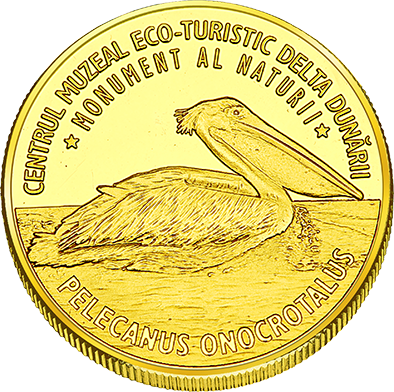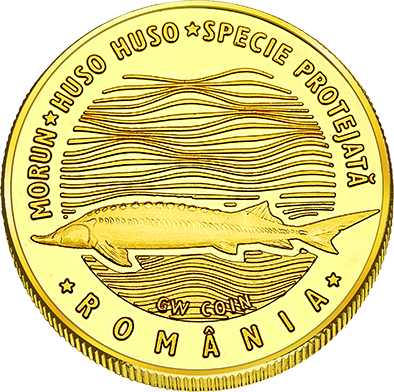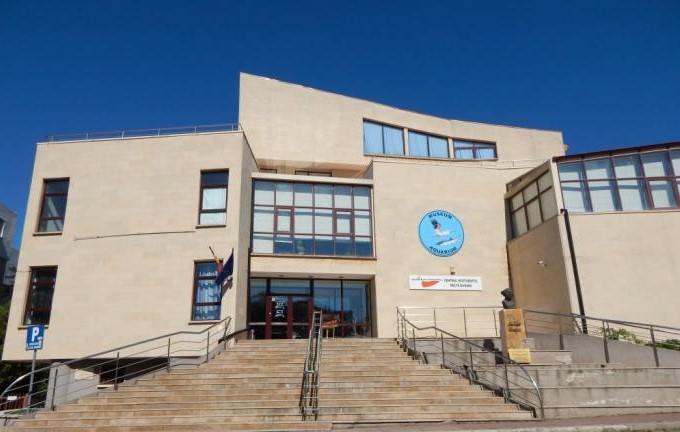CENTRUL MUZEAL ECO-TURISTIC DELTA DUNĂRII
Situated near of the Danube River bank, the Danube Delta Ecotourism Museum
Center, within the "Gavrilă Simion" Eco-Museum Research Institute (ICEM), represents
the new name and, respectively, the new space in which operates since 2009, the old
Danube Delta Nature Sciences Museum, the first museum section established in 1964
within ICEM Tulcea. The idea of organizing a museum of nature sciences to present the
fluvial and coastal area of Tulcea County, was determined by the existence in this
"corner" of Romania of a unique territory through its natural landscapes, of exceptional
ecological and aesthetic values, whose genesis and evolution resulted from the happy
combination of climatic, edaphic, hydrographic and topographical conditions – the
Danube Delta.
Having become in the last 40 years an important ecotourism area of Europe, the
Danube Delta is presented within the Center through information panels, maps and
dioramas, as well as the public Aquarium, the museum being a means of knowledge
and information, as well as a factor in promoting natural heritage and encouraging and
supporting good quality tourism, which avoids engendering environmental issues – the
ecotourism. This, by juxtaposing cultural tourism and adventure tourism (e.g. bird-
watching, hiking through forests, canal trips with traditional boats) forms the sustainable
tourism.
All these aspects are presented synthetically in the permanent exhibition, focusing
on the representative, distinctive elements of the natural and social setting of the
Danube Delta, in the context of the North-Dobrogean space, through the theme
addressed, the exhibition having a unique character for Romania. The existence of a
great diversity of aquatic habitats (freshwater, brackish and marine waters) created
favorable conditions for the development of a particularly rich ichthyofauna, which
justified the setting up of a public Aquarium within the CMEDD, giving the possibility to
tourists to know directly this wealth of the Delta.
The permanent exhibition is structured in three sections (history, nature and
ethnography) and is displayed over two levels (ground floor and first floor). Scientific
information is presented in the form of documentary films (in Romanian, English,
French, German) and in the form of text on panels and labels (in Romanian, English
and German), as well as on two infokiosks (in Romanian and English). For added
attractiveness, but also for the most faithful reproduction of the aspects of the presented
habitats, the plant materials used are natural and the dioramas are sonorized with the
voices of the birds presented in each of the dioramas. In this way, we want the public
have experience the sensation of being "present in the middle of the nature".
The Aquarium is set up in the basement of the building and presents a collection
of aquatic organisms consisting of fishes from Danube Delta Biosphere Reserve`s fish
fauna, as well as fishes and invertebrates from coral reefs and freshwater fishes from
tropical areas. The presentation of the exhibits is done according to the living
environment (freshwater species and marine species), the ecology (semimigratory and
migratory species) and the feeding regime (omnivorous/peaceful species and predatory
species).
Opened for the public in February 2009, the Center forms, together with the
cultural objectives located in it`s vicinity – the Museum of Art (Pasha Palace), the
Museum of Ethnography and Folk Art, the Aziziye Mosque (Abdulaziz Sultan`s Mosque)
– the most representative cultural nucleus of the City of Tulcea, which annually
attracts tens of thousands of tourists and locals.
The Danube Delta Ecotourism Museum Center is a favorite place for locals and
tourists for recreation and socializing, both because of the activities they carry out and
for the facilities created for visitors, including people with disabilities (wireless, indoor
elevator, access ramp, marked visiting route with touch surfaces, souvenir shop).


